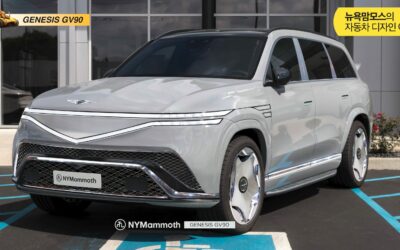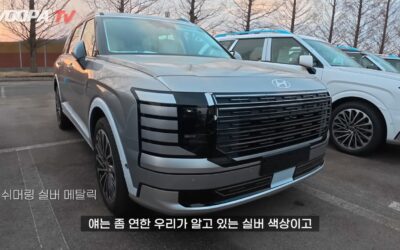Kia hybrid technology, so far available only in the United States, is coming to Europe. A Europe-specific version of the stylish Optima Hybrid saloon is about to go on sale featuring sophisticated new technologies which are destined to appear in other Kia production models in the next few years.
The European Optima Hybrid features a 2.0-litre petrol engine and electric motor powertrain, and will be manufactured in Korea exclusively for the European market (left-hand drive only) The 2.0-litre GDi model has been developed from the 2.4-litre Optima Hybrid for the US market.
It represents another step forward in Kia’s EcoDynamics fuel-saving, emissions-reducing strategy and is the first D-segment petrol hybrid on sale in Europe.
Seamless driving for everyday motoring
The Optima Hybrid 2.0-litre employs a truly innovative Kia-developed parallel hybrid system that delivers a unique blend of performance – maximum power is 188 bhp, delivering acceleration from 0-62 mph in 9.4 seconds and a top speed of 120 mph – and class-leading fuel economy (52.3 mpg) with low CO2 emissions of 125 g/km.
The petrol engine is paired with a small electric motor and drives the front wheels via a six-speed automatic transmission – without the traditional torque converter. A special clutch between the engine and motor enables the engine to de-couple from the powertrain for zero-emissions full-electric driving up to 62 mph. The system does not require a high-capacity electric motor and generator, saving weight and cost.
Kia’s ISG stop/start system further ensures zero fuel consumption and emissions when the car is stationary in traffic.
In all conditions the Optima Hybrid’s operation is automatic and seamless. When setting off, the car drives in electric mode at speeds up to 62 mph. As the car’s speed increases, the Hybrid Starter motor/Generator (HSG) starts the petrol engine and the clutch is closed, allowing the engine to drive the car. The electric motor switches into hybrid operation and serves as either a secondary engine (during full acceleration and hill-climbing) or a generator (during cruising and deceleration) to recharge the battery pack as necessary.
When the car comes to a stop for more than a few seconds, the engine automatically shuts off. Under braking, the electric motor converts kinetic energy into electricity for storage in the battery pack. The HSG also functions as a generator to recharge the battery pack if the state of charge is low when the car is stationary.
The Optima Hybrid’s 30 kW Interior Permanent Magnet (IPM) synchronous electric motor develops produces 40 bhp and 205 Nm of torque alone. The combined electric motor plus petrol engine have a maximum combined power output of 188 bhp.
State-of-the-art batteries and optimised engine
Kia and partner Hyundai are the first manufactures to use a lithium polymer battery pack in a production car. Developed in partnership with LG Chem., lithium polymer battery technology is 20 per cent lighter and 40 per cent more compact than a traditional nickel metal hydride battery. The new batteries for the Optima Hybrid hold a charge for up to 25 per cent longer and provide an optimum balance between power delivery, energy density and thermal stability. Reliability is so good that the Optima’s battery pack is covered by a seven-year, 100,000 mile warranty.
Taking advantage of the additional, instant and continuously available torque from the electric motor, the Optima Hybrid uses 10 per cent less fuel on the combined cycle, 28 per cent less on the urban cycle and produces 21 per cent less CO2 than the 1.7-litre diesel Optima automatic.
Kia has modified its popular six-speed automatic transmission to suit the hybrid application. The traditional torque converter is replaced with the electric motor and a high-efficiency oil pump. This allows EV mode operation, maximises regeneration of kinetic energy during braking and also provides a more responsive drive than competitors’ CVT systems.
Ultra-low-drag aerodynamics
The award-winning styling of the Optima has been further enhanced for the hybrid model to optimise its streamlining. There are smoother front and rear bumpers plus unique side sills, lightweight low-drag alloy wheels, smooth under-floor panels, a lip-type boot spoiler and a new front grille with an active air flap that closes as the car’s speed increases. Together, these changes result in an ultra-low drag coefficient of Cd 0.26 – down from 0.29.
Inside, there is a unique supervision instrument cluster (with added hybrid powertrain information), plus a new centre stack, new door trim and new seat trim. Thanks to the long (2,795 mm) wheelbase, the Optima Hybrid’s cabin is exceptionally spacious, offering best-in-class front passenger headroom and legroom.
Generous equipment
The Optima Hybrid will be available with up to three different equipment levels, all generously specified with solar glass, dual zone air-conditioning, cruise control, an eight-way powered driver’s seat with memory function, Bluetooth® hands-free phone connectivity and smart-key entry with engine start/stop button. Further up the range, part-or full-leather seat trim, heated front seats, a ventilated driver’s seat, a seven-inch touch-screen satellite -navigation, rear-view safety camera, an Infinity premium audio system developed by Harman, Xenon headlamps, four-way powered front passenger seat, heated rear seats and a tyre pressure monitoring are fitted.
Benny Oeyen, Vice President Marketing and Product Planning, Kia Motors Europe, says: “The new Optima Hybrid combines the best of both worlds – performance and fuel economy. It’s the fastest accelerating automatic transmission Optima and also has the lowest emissions. By adding a hybrid model to our Optima line-up in Europe, we are providing customers with a fascinating powertrain choice. Our first hybrid production model in Europe showcases ingenious engineering and advanced technologies that will have a unique appeal, attracting new customers to the Kia brand.”
TECHNICAL SPECIFICATIONS / EUROPE
New Kia Optima Hybrid
Body and chassis
Four-door, five-seater D-segment sedan, with all-steel unitary construction bodyshell. Transversely mounted gasoline / electric parallel drive hybrid system powering the front wheels via a six-speed automatic transmission.
| Gasoline engine | |||
| 2.0-litre 150 ps | |||
| Type / capacity | Nu, MPI, 4-in-line, DOHC 16-valve CVVT / 1999 cc | ||
| Power / torque | 148 bhp (110 kW) @ 6000 rpm / 180 Nm @ 5000 rpm | ||
| Bore x stroke (mm) | 81.0 x 97.0 | ||
| Compression ratio | 12.5:1 | ||
| Electric motor | |||
| 270 VDC, 40.2 ps | |||
| Type | Interior-permanent magnet synchronous motor | ||
| Power / torque | 40 bhp (30 kW) @ 1400-6000 rpm / 205 Nm @ 0-1400 rpm | ||
| Combined outputs | |||
| Max power | 188 bhp (140 kW) @ 6000 rpm | ||
| Transmission | |||
| Automatic | 6-sp (with fully automatic & sport modes) | ||
| Battery pack | |||
| Type | Lithium Polymer | ||
| Voltage / Capacity | 270 / 5.3 Ah | ||
| Max output | 34 kW | ||
| Weight (kg) | 43.5 | ||
| Suspension and damping | |||
| Front | Fully independent by subframe-mounted MacPherson struts, with coil springs and twin-tube gas-filled shock absorbers. Anti-roll bar. | ||
| Rear | Fully independent by subframe-mounted multi-links, coil springs and twin-tube gas-filled shock absorbers. Anti-roll bar. | ||
| Steering | |||
| Type | MDPS electric power assisted rack & pinion steering | ||
| Wheel turns | 2.94 turns lock-to-lock; turning circle of 10.9 metres | ||
| Brakes | |||
| Front | 300 x 28 mm ventilated discs | ||
| Rear | 284 x 10 mm solid discs | ||
| Booster size | 10.5 inch | ||
| 100-to-0 kph | 38.3 metres (with 17-inch wheels/tyres) | ||
| Wheels and tyres | |||
| Standard | 16 x 6.5 inch alloy | 205/65 R16 | |
| Optional | 17 x 7.0 inch alloy | 215/55 R17 | |
| Spare | Temporary steel wheel | ||
| Dimensions (mm) | |||
| Exterior | |||
| Overall length | 4845 | ||
| Overall width | 1830 (excluding door mirrors) | ||
| Overall height | 1455 | ||
| Wheelbase | 2795 | ||
| Front track | 1595-1601 (depending on wheel / tyre combination) | ||
| Rear track | 1595-1601 (depending on wheel / tyre combination) | ||
| Front overhang | 965 | ||
| Rear overhang | 1085 | ||
| Ground clearance | 135 | ||
| Aerodynamic Cd | 0.26 | ||
| Interior | Front | Rear | |
| Head room | 1028 | 965 | |
| Leg room | 1155 | 880 | |
| Shoulder room | 1455 | 1415 | |
| Hip room | 1388 | 1384 | |
| Capacities (litres) | |||
| Fuel tank | 65 | ||
| Luggage | 381 | ||
| Weights | |||
| Kerb weight (kg) | 1587 | ||
| Maximum (kg) | 2050 | ||
| Weight distribution | 57.6 / 42.4% | front / rear | |
| Performance | |||
| Top speed (kph) | 192 | ||
| 0-to-100 kph (sec) | 9.4 | ||
| Fuel consumption and emissions | |||
| Litres / 100 km* | 5.4 | ||
| CO2 (g/km) | 125 | ||
| *Official combined cycle test, model with 16-inch wheels/tyres | |||






